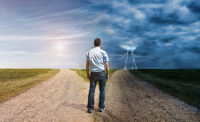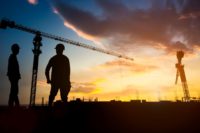'I don’t care about looking weird': Young adults see dangers of hearing loss, need for PPE

Credit: Getty Images
An estimated 30 million workers in the U.S. are exposed to hazardous noise on the job each year that can cause permanent hearing loss, according to NIOSH. A new study by NIOSH reports that more than half (53%) of the workers don’t use hearing protection “always” or “usually” when encountering dangerous noise levels.
Personal protective equipment non-compliance is a perennial headache for safety and health pros. When it comes to hearing protective devices (HPDs), the reasons for non-use are many: HPDs may be uncomfortable or cumbersome; workers might be unable to communicate with co-workers; important warning alarms or alerts may be blocked out; long-term effects of noise exposure may not be understood; and some workers may simply resist wearing HPDs, even after training, because they don’t want the extra accessory.
Off-the-job awareness & PPE acceptance
There might be a solution at hand. Today there is a growing awareness of noise hazards. This emanates not in the workplace, but of all places comes from of music festivals, gigs, bars and clubs, according to an article in The Guardian, a newspaper in the United Kingdom. An average club noise volume comes in at around 100dB. A classical orchestra can reach 94dB and a rock band can peak as high as 125dB, according to the article.
No wonder the World Health Organization earlier this year warned that “over one billion young adults are at risk of permanent, avoidable hearing loss due to unsafe listening practices.”
Coming to the rescue for young adults are fashionable earplugs designed to look like jewelry – making hearing protection “for the first time, quite cool,” according to the article.
Hip consumers are the model
To be sure, this “cool” protection is marketed to consumers, particularly millennials and Gen Z concert-goers, festival campers and clubbers — not industrial workers. “Lean into everything you love that’s loud with bold noise-reducing earwear,” and “Live life at your volume” — slogans found on the Loop earplugs website – is not the hip message safety and health pros would sell to workers to promote compliance.
A music journalist complained in The Guardian article that after visiting clubs and concerts that are too loud, without earplugs her ears would be ringing for days afterwards. Wearing Apple AirPods Pro, she says the “sound is way better and I don’t really care if it looks weird.”
Something more far-reaching is going on here than making music safer to listen to. “Earplugs are having a moment,” according to article, describing “the rise in earplug use to combat hearing damage.” Earplugs having their “moment” and the rising use of protection is spurred on by growing awareness of harmful noise and hearing loss, especially among post-baby boomer generations.
Hip & cool PPE
Loop’s best-selling models on its website, featuring silicone buds attached to colorful small hoops, are designed for a variety of applications: “peaceful” travel and commuting; napping and sleeping (“wake up well-rested and ready to go”); more focused and engaged conversations; social gatherings; parenting (“reduce sensory overload and reclaim your sense of calm”); concerts and festivals; live entertainment; and sporting events. Prices range from about $26 to $78 per pair, according to the article. Noise reduction is in the 16dB to 27dB range.
I asked a Loop website chatbot, “Can Loop earplugs be worn at work?” Answer: “Absolutely! Loop earplugs can be worn at work. For deep focus… earplugs reduce background noise by up to 24dB. They come in various colors to match your office vibe. For team collaboration and meetings… (earplugs) reduce noise by 16dB while keeping conversations clear and comfortable.”
On-the-job applications
There’s a caveat here: these popular, fashionable earplugs are intended primarily for white-collar work (the “office vibe”, team meetings, deep concentration at your desk, etc.), not for heavy-duty occupational use.
“If you are considering using earbuds or noise-cancelling headphones as your hearing protection device, it is important to remember that noise-cancelling headphones and earbuds are not primarily hearing protection devices (HPD),” states a U.S. Naval Safety Command briefing. “HPDs are noise reduction-rated products by EPA-accredited laboratories. HPDs such as earmuffs and earplugs physically block out sound while noise-cancelling headphones such as earbuds use active noise cancellation technology to reduce low-frequency ambient noise.”
A positive development
Fashionable, jewelry-like earplugs face technical limitations for occupational use. And come with prices that most employers would balk at in blue-collar industries such as construction, mining and factory assembly work, where PPE is looked at as a commodity. Still, the increasing acceptance of hearing protection across numerous applications and a broad swathe of young workers reflects a growing awareness of hearing damage and hearing loss. This is a true positive because:
• More than 20,000 workplace hearing loss cases occur annually, many resulting in permanent hearing loss, according to the U.S. Bureau of Labor Statistics.
• About 12% of all workers in the U.S. having hearing difficulty, according to the Centers for Disease Control and Prevention (CDC).
• Tinnitus — buzzing, roaring, clicking, hissing, humming, whistling or sizzling in the ears which is noise-induced but can be heard when there is no external noise source – affects 10-25% of adults. About 8% of all workers have tinnitus, according to the CDC.
Beyond hearing protection
Conserving hearing and wearing hearing protection on the job begins with being aware of the dangers of excessive noise. The positive attitudes and behaviors of young adults regarding protecting their hearing have their origins far from construction sites and assembly lines, but as demographics continue to trend to younger workers, safety and health pros may indeed have an easier time with PPE compliance – beyond hearing protection. New head protection styles coming from the sports and recreation markets are another example of young workers who use PPE off the job taking to PPE on the job. Carhartt work jackets and vests and FR clothing; Wrangler FR jeans; Timberland steel-toe, composite-toe and alloy-toe work boots; and stylish, colorful wraparound safety eyewear (Duluth Trading Company, Carhartt, Swiss & Wesson and more) are other examples of numerous consumer brands coming into the industrial safety “space.” And hopefully making PPE compliance easier in the future.
Looking for a reprint of this article?
From high-res PDFs to custom plaques, order your copy today!






